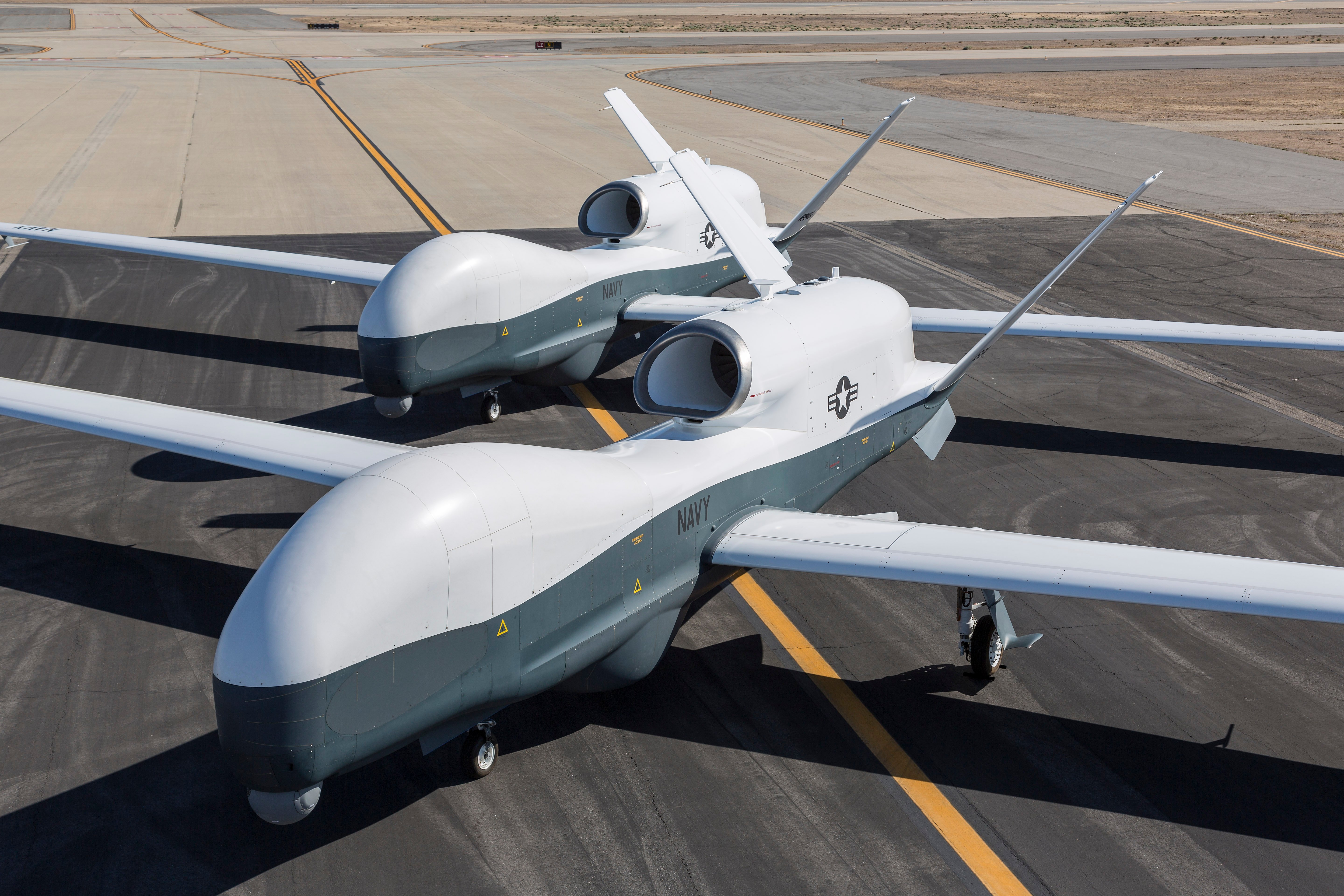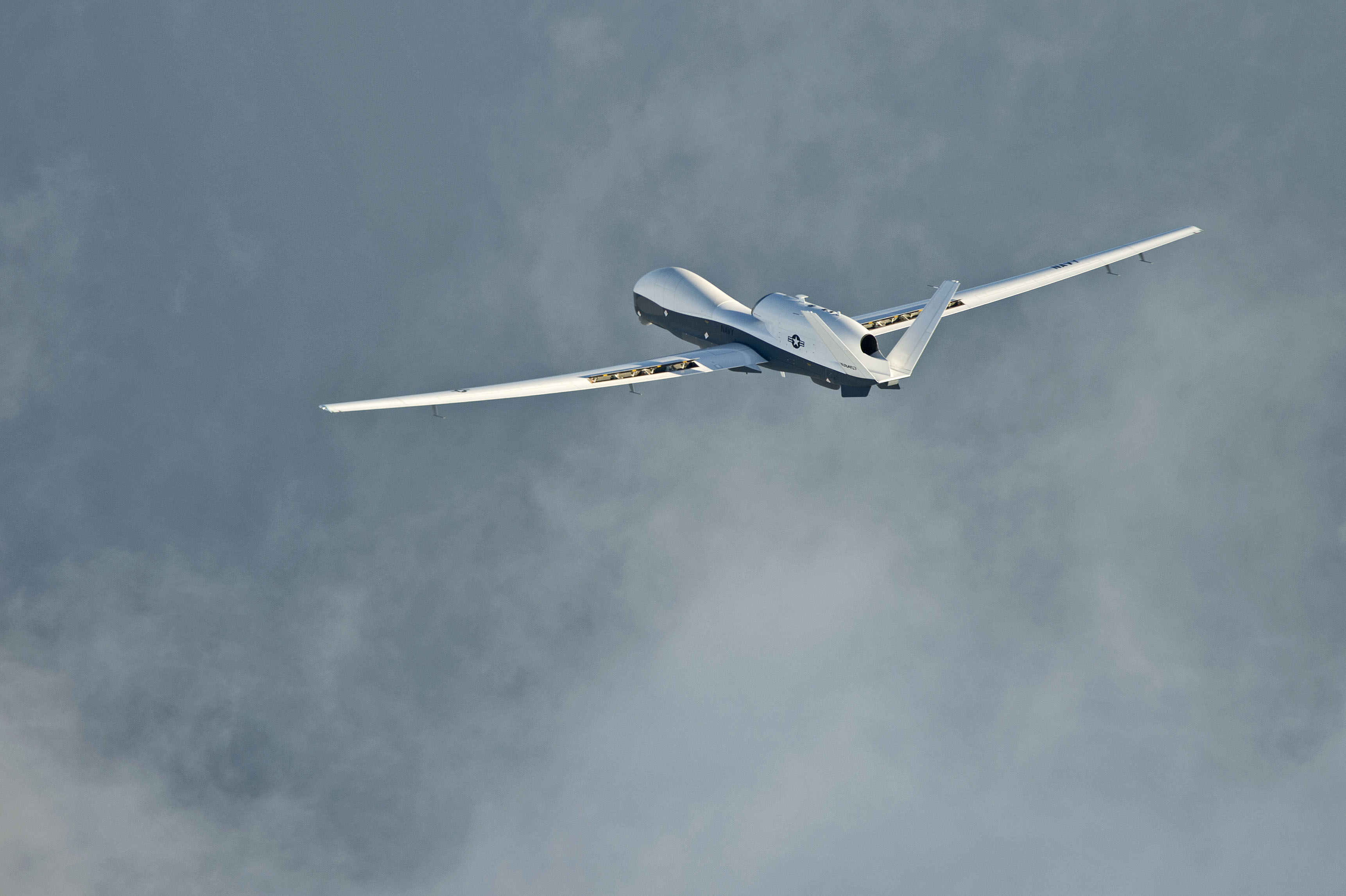
THE PENTAGON – The Navy will stand up its first unmanned-only aviation squadron this week, as the MQ-4C Triton community establishes its first operational squadron in a ceremony Friday, the Navy’s director of air warfare told USNI News.
Unmanned Patrol Squadron (VUP) 19 will operate out of Naval Air Station Jacksonville, Fla., collocated with manned P-8A Poseidon squadrons. VUP-19 will consist of only unmanned aircraft, a first for the Navy, and will fall under Patrol and Reconnaissance Wing 11 with P-8 squadrons, Rear Adm. DeWolfe Miller (OPNAV N98) said Monday.
The official formation of the squadron, led by Cmdr. Benjamin Stinespring, will begin a long process of preparing for early operational capability and a first deployment to U.S. 7th Fleet in 2018, Miller explained.
The squadron has no air vehicles for now; it will receive its first vehicles in late 2017. In the mean time, the approximately 130 squadron members have already begun rotating through Naval Air Station Patuxent River in Maryland to train with the test pilots stationed there. In January a Triton mission systems trainer will deliver to NAS Jacksonville to further train the air vehicle operators, and Naval Air Station Point Mugu in California has additional facilities to help train the maintainers, Miller said.
In addition to training, the VUP-19 crew will be tasked with collaborating with P-8 operators to develop tactics, techniques and procedures for operating the two maritime patrol/reconnaissance aircraft.
“How are we going to work together, man/machine teaming, for anti-submarine warfare? How are we going to get the information that’s going to be provided by a persistent long-range airplane with all sorts of sensors?” Miller said.
“Who [maintains] working relationships? How do we get information and distribute it to the folks that need it? How do we truly operationalize [the Triton fleet]?”
Miller said the Triton operators will have a good head start thanks to an understanding of what capability the MQ-4C brings to the fleet, as well as lessons learned from the teaming arrangement of the MQ-8 Fire Scout and the MH-60 – whose operators are grouped together in a common squadron, unlike the separate command structures for the MQ-4C and its manned partner.
“We know the strengths of each of the platforms – what Triton brings is that persistence, and the reach of its sensors is significant such that it can cue the P-8. Hey, go here. That sort of stuff,” Miller said.
“Or, at times where it is available, the P-8 may not be. P-8s don’t fly for 24 hours at a time, so when you establish an orbit [with Triton] it’s more persistent, and again the reach of the sensors is quite a bit more extensive.”
Referencing the OODA loop of observing, orienting, deciding and acting against a problem, Miller said Triton would cover much of the first two and serve as “a large contributor to that situational awareness,” allowing the P-8 crews to focus on the latter two.

While VUP-19 will have the freedom to write the TTPs as it sees fit, Miller noted that Triton’s predecessor, the Broad Area Maritime Surveillance Demonstrator (BAMS-D), has been operating in U.S. 5th Fleet for years, with the same maritime patrol/reconnaissance community gathering lessons learned along the way.
“We’ve learned a lot and that’s why we’re excited because we know what it has contributed as far as maritime awareness in the 5th Fleet area of operations. And so Triton is kind of a BAMS-D on steroids if you will, it incorporates many more sensors and the information that it will be able to provide to decision-makers will be far superior,” he said.
“And to now have this, or at least have the squadron in place that’s going to be delivering these capabilities to the fleet, is a significant milestone.”
Miller said the Navy had set this fielding effort up for success with a slow crawl/walk/run approach. The squadron stands up this week and will begin operating Tritons in the continental United States during early training and tactics development. By the time early operational capability rolls around in 2018, the squadron will be flying the air vehicles in and around Guam, and after an EOC declaration the vehicles would be moved as needed for 7th Fleet operations. The operators themselves will remain in Jacksonville at a vehicle control and information processing center, and a small detachment of maintainers will deploy forward to keep the air vehicles up and running. It has not yet been decided where the air vehicles will be stationed when not on deployment, USNI News understands.
After reaching EOC, a second squadron, VUP-11, will eventually be stood up at NAS Whidbey Island, Wash. The air vehicles themselves will also grow in capability, with more sensors being added until a future variant in the 2020 timeframe is ready to replace the manned EP-3E Aries II multi-intelligence reconnaissance aircraft, Miller said. He said the overall approach for Triton is “learn, grow, learn, grow.”
“It’s just exciting: we talk about man-machine teaming, we talk about our unmanned vehicles, and now here’s a milestone event where we’re standing up a squadron and it’s becoming a reality,” he said.
“So I kind of get giddy over it because, it’s interesting, I worked in N2/N6 as my first flag job four years ago when Triton was just getting unveiled at Northrop Grumman, and now to be the resource sponsor four years later as we’re standing up the first squadron and getting ready to march towards deployment is pretty fulfilling.”





